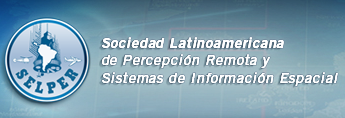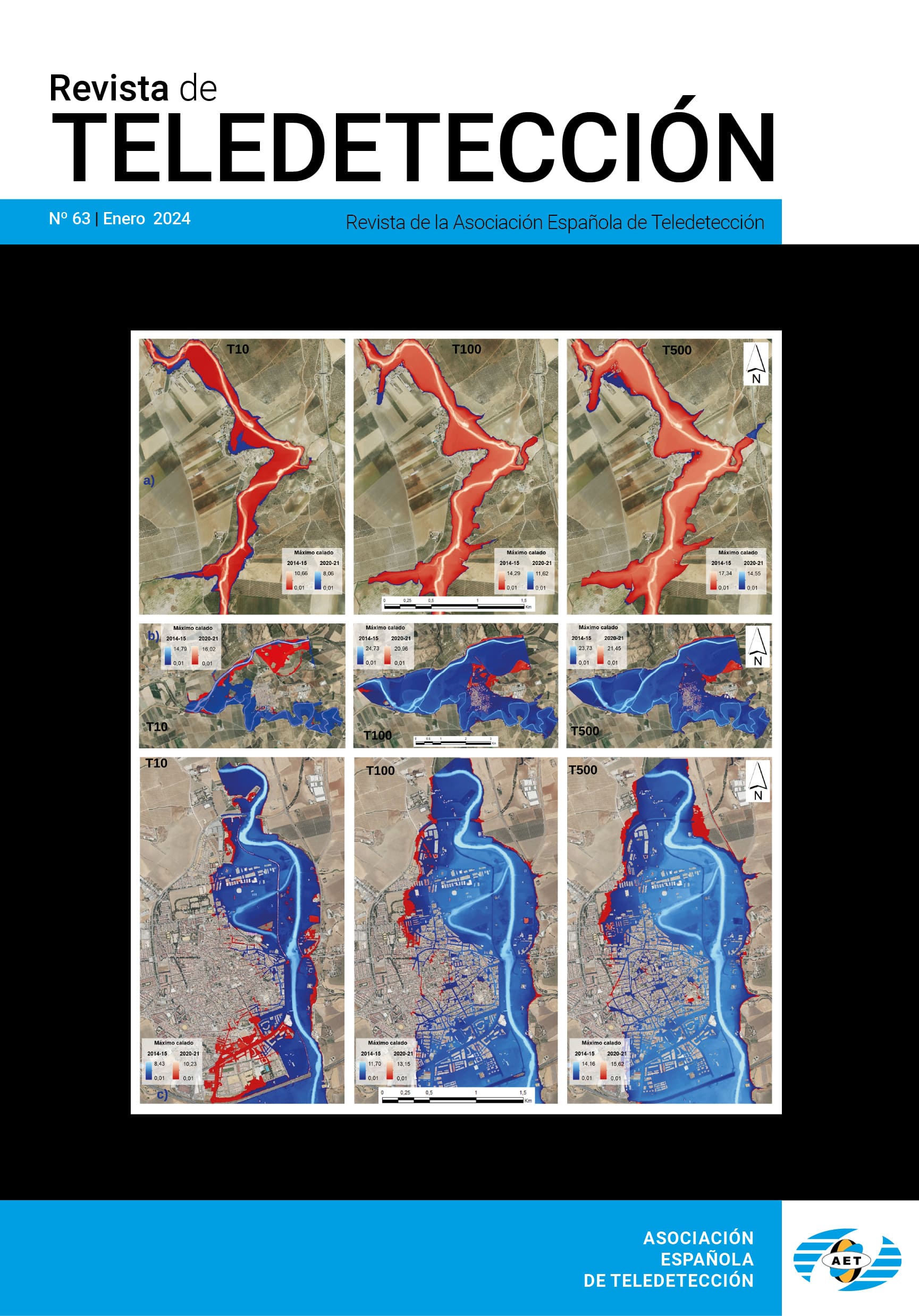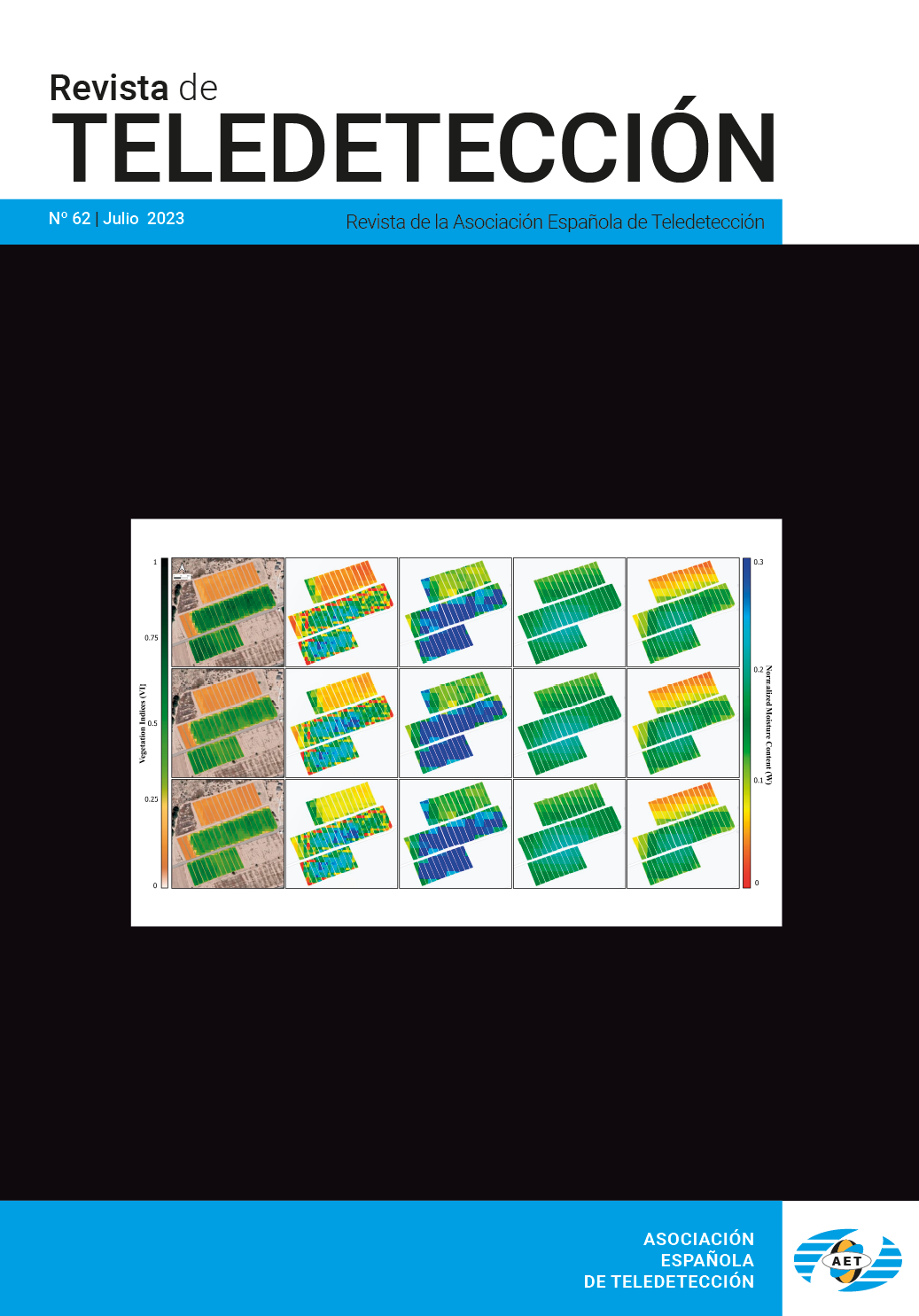Contribución al estudio de los humedales del manto eólico litoral del Abalario-Doñana a partir de imágenes AHS
C. Antón-Pacheco, M.T. Moreno, J. A. Gómez, M. Jiménez, C. Mediavilla, J.C. Gumiel, E. Prado, J.G. Rejas, O. Gutiérrez y A. Rebollo
RESUMEN
Se han registrado tres campañas de vuelos con el sensor hiperespectral AHS sobre el Manto Eólico Litoral de El Abalario-Doñana (MEL), importante ecosistema que comprende un gran número de lagunas permanentes y temporales, en parte dependientes del agua subterránea. El sensor AHS es un nuevo espectrómetro de imagen aeroportado que registra la radiación de las regiones solar y térmica del espectro en 80 canales. Las imágenes obtenidas en primavera y principios del otoño de 2004 y 2005 han sido geocodificadas utilizando los parámetros de orientación externa medidos por un sistema inercial GPS/INS a bordo del avión. Se han aplicado correcciones atmosféricas utilizando espectroradiometría de campo registrada durante los vuelos. A partir de la información AHS corregida y calibrada se han cartografiado los niveles de inundación de las formaciones palustres y sus fluctuaciones durante el período comprendido entre abril de 2004 y septiembre de 2005. Las medidas de campo y el tratamiento de los datos AHS ha permitido identificar y cartografiar la vegetación higrofítica (monte negro) característica de la zona, cuya distribución es un buen indicador de la profundidad del nivel freático en este sector del acuífero regional Almonte-Marismas.
ABSTRACT
High spectral-resolution AHS data have been collected over the Manto Eólico Litoral El Abalario- Doñana (MEL) within the nature reserve of Doñana, a Ramsar wetland, which constitutes one of the largest and most important remaining wetlands in Europe. The MEL is located in the wind mantle of the Huelva coastal plain and holds a large number of permanent and temporal shallow marsh lagoons. Natural vegetation is mainly composed of different types of shrub communities, whose distribution depends on their position with regard to the phreatic water table depth of the Almonte-Marismas aquifer. The AHS system is a new 80-band airborne hyperspectral scanner covering the visible through long wave thermal IR. Data were collected during three flight campaigns in spring and early fall 2004 and early fall 2005. Atmospheric correction and in situ spectral reflectance measurements have been applied and the data has been geo-rectified using an integrated GPS/INS. Surface water fluctuation in April and September 2004 and September 2005 have been mapped and spectral characterization and mapping of hygrophytic shrub vegetation has been performed.
PULSE AQUI PARA DESCARGAR EL ARTÍCULO COMPLETO.



















